How to set up your pavement café area
The following guidance shows pavement café licence holders how to set up a pavement café area in different street environments.
- Barriers - out first and in last
- Leaving a gap for access to the premises
- Barrier tapping rails
- Considering your equality duties
- Examples of pavement café layouts
Barriers - out first and in last
The first thing you will need to set up is the barriers surrounding the pavement café area. This needs to be done before any other furniture is taken out. At the end of the licensed period, the barriers need to be the last item you take back in.
This is because the barriers define the licensed area so setting them out first will enable people with visual impairments to navigate around the pavement café area.
You will need to ensure that the barriers are set up correctly, as per the manufacturer’s instructions. The tapping rail at the bottom of the barriers needs to be set up so that it can guide cane users. The canvas separator needs to be secured.
Setting the barriers first will also enable you to check that the dimensions and layout of the pavement café are correct, making sure that the width required for people and/or vehicles to get past, as stated in your licence, is always available.
If the feet or base of the barriers are wider than the barriers themselves, these must be fully within the licensed area. They cannot be allowed to encroach on the width which needs to remain available for people and/or vehicles to pass.
You will need to check the barriers regularly during the day to make sure that they have not been moved and remain correctly installed.
When you take the furniture back in at the end of the licensed period, always leave the barriers to last as this will protect people with visual impairments who could otherwise walk into the furniture if it is not protected by the barriers.
Leaving a gap for access to the premises
You will need to leave a gap in the barriers to provide access to your premises. This gap should be 1.5m wide but no wider. This is to enable wheelchair and mobility aid users to access your premises whilst ensuring that the gap remains as narrow as possible to guide cane users and guide dogs.
Barrier tapping rails
Barriers must have a tapping rail and be installed correctly. You will need to check them regularly during the day to ensure that they are still installed correctly and that they have not been moved to encroach on the corridor which needs to remain free of obstructions for passing people and/or vehicles.
Barrier tapping rail illustration:
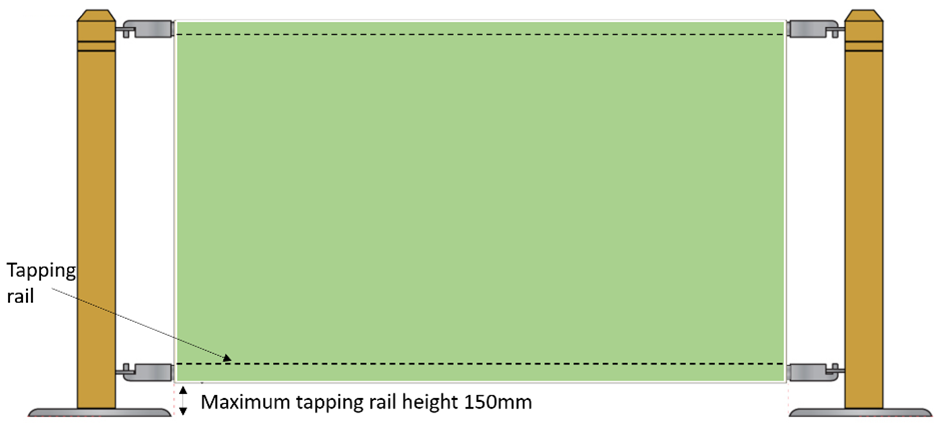
The maximum tapping rail height is 150mm.
Considering your equality duties
When choosing furniture, planning, and setting up your pavement café area, you need to consider your duties under equality law.
The Equality and Human Rights Commission offers specific advice: Equality law - Hotels, restaurants, cafés and pubs.
Examples of pavement café layouts
These examples show the required dimensions for accessibility corridors and access in different street environments.
- Example layout for café on the footway - street with kerbs
- Example layout for café on the carriageway - street with kerbs
- Example layout for café on the footway - street with level access, no kerbs
- Example layout for café in open area - for example Parliament Street
Example layout for café on the footway - street with kerbs
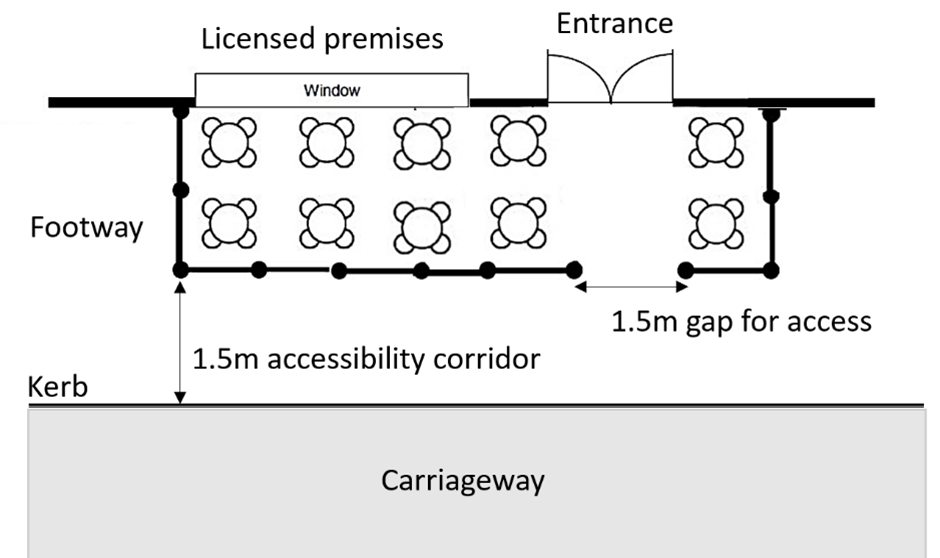
There should be a footway accessibility corridor of 1.5 metres between the seating area and the carriageway. The accessibility corridor may be increased to 2 metres in busy areas.
There should be a 1.5 metres gap for access from the footway to the seating area.
Example layout for café on the carriageway - street with kerbs
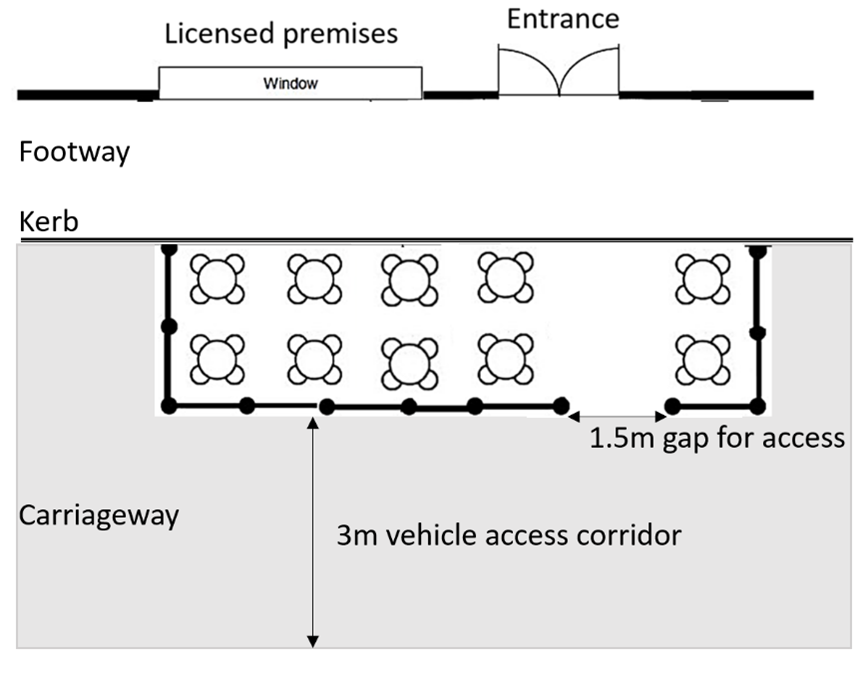
There should be a carriageway vehicle accessibility corridor of 3 metres from the edge of the seating area across the carriageway.
There should be a 1.5 metres gap for access from the carriageway to the seating area.
Example layout for café on the footway - street with level access, no kerbs
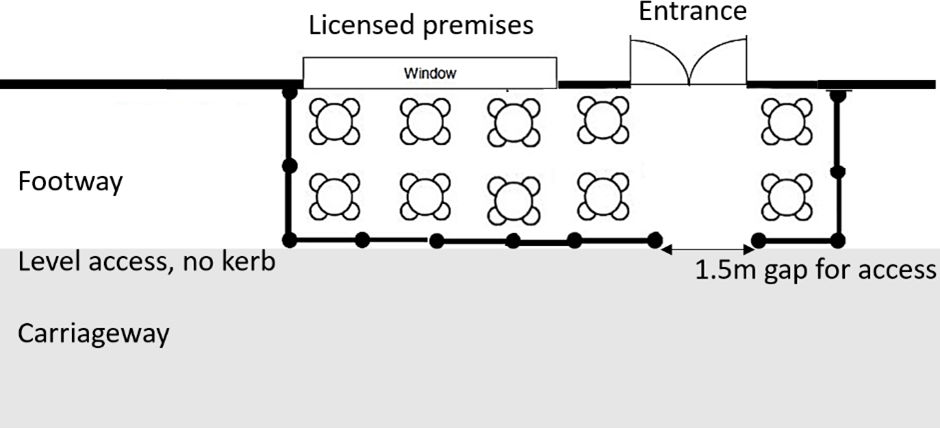
With the seating area on the footway, and access from the carriageway, there should be level access between the carriageway and the seating area (no kerb).
There should be a 1.5 metres gap for access from the carriageway to the seating area.
Example layout for café in open area - for example Parliament Street
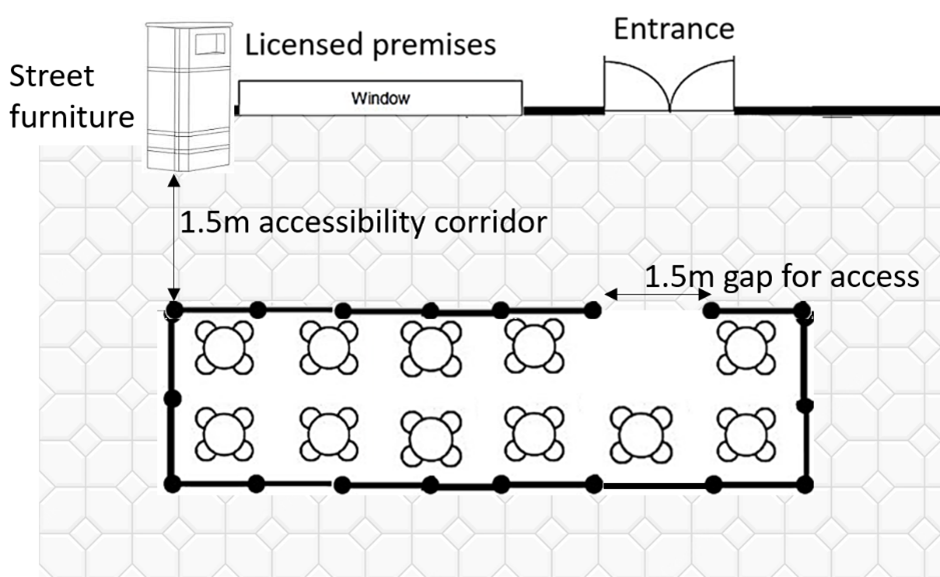
There should be a footway accessibility corridor of 1.5 metres between the seating area and any street furniture (such as waste bins, or benches). The accessibility corridor may be increased to 2 metres in busy areas.
There should be a 1.5 metres gap for access to the seating area.


